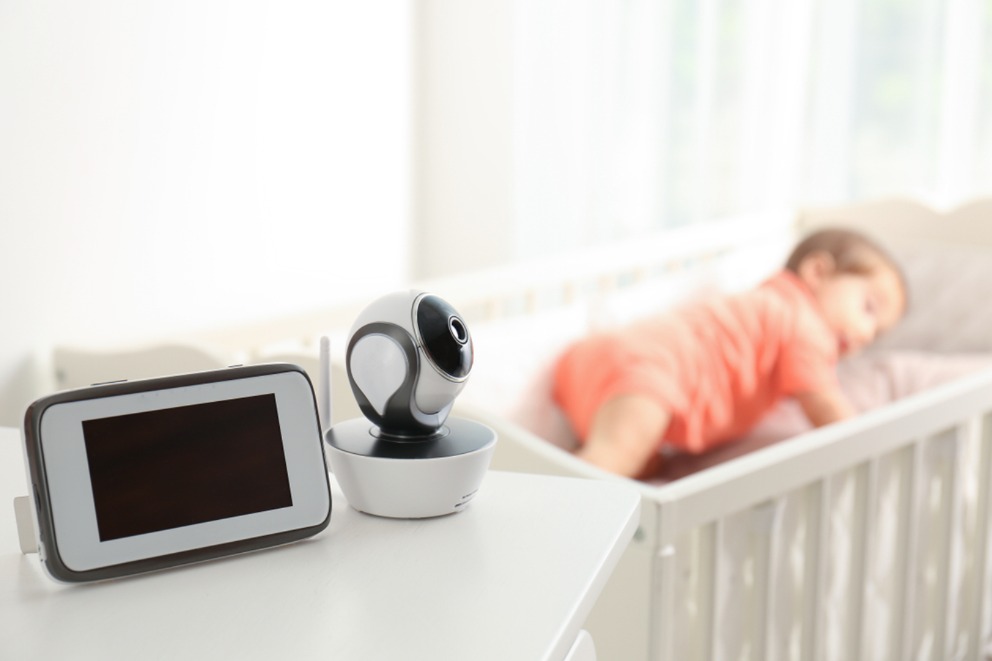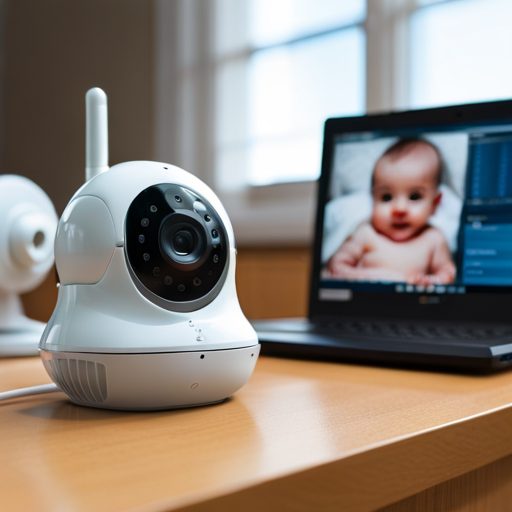Baby monitors have evolved from simple one-way walkie-talkies to sophisticated digital devices, offering features like video streaming, temperature sensing, and many more. However, as these devices become increasingly sophisticated, they also become more susceptible to certain risks. This leads us to a pertinent question: “Can baby monitors be hacked?”
The answer, unfortunately, is yes. Baby monitors, particularly those transmitting signals over a WiFi network, can indeed be hacked. They fall under the broad umbrella of Internet of Things (IoT) devices, which connect to the Internet and hence, are susceptible to hacking.
Here, we will delve deeper into this issue, providing a comprehensive analysis of how baby monitors can be hacked, the potential risks involved, and crucially, what you can do to protect your device and maintain the privacy and safety of your little one. Keep Reading!
How Do Baby Monitors Get Hacked?
Baby monitors can be hacked in several ways, and the method largely depends on the type of monitor. Two main types of baby monitors are vulnerable to hacking: those that use radio frequency and those that are connected to the internet.
Radio Frequency Monitors
Radio Frequency (RF) monitors operate by transmitting audio or video signals over a specified frequency band. If a baby monitor uses radio frequencies, a hacker with a receiver tuned to that same frequency can potentially intercept the signal. This interception would allow them to access the feed of the baby monitor, peering into private moments.
However, this form of hacking has a considerable limitation – the hacker needs to be physically close to being within the signal range. Despite this proximity requirement, it’s still unsettling to know that someone could be watching or listening if they’re nearby.
Internet-Connected Monitors
In contrast, ‘smart’ baby monitors connect to your home’s Wi-Fi network. They allow you to view the audio and video feed through your smartphone or other internet-connected devices. While these monitors offer convenience and connectivity, they also open up potential pathways for cyberattacks.
Common Hacking Methods
- Default Passwords
Many baby monitors come out of the box with default usernames and passwords. A significant issue arises when users do not alter these factory settings. Hackers are familiar with these defaults and can easily take control of the baby monitor if these credentials remain unchanged.
- Unsecured Networks
Another vulnerability is the security of your home Wi-Fi network itself. Without adequate protection, like strong passwords and updated encryption protocols, hackers can infiltrate your entire network. Once they have access, they can manipulate any device connected to it, baby monitor included.
- Software Vulnerabilities
Like any piece of technology, baby monitors are not immune to software vulnerabilities. These weaknesses can serve as gateways for hackers who know how to exploit them, leading to unauthorized access and control over the device.
Why Would Someone Hack a Baby Monitor?
It’s a question that leaves many baffled: Why would someone hack a baby monitor? Delving into the range of motives, we discover that they span from the seemingly harmless to the alarmingly malevolent.
Invasion of Privacy
For some individuals, the motive can be as simple as the perverse thrill of invading someone else’s privacy. They find satisfaction in being unseen observers, spying on families during their most private moments without their knowledge or consent. This invasion can feel as disturbing as a physical intrusion into the home.
Cybercrime
Cybercriminals often seek out the weakest link in a security chain. A hacked baby monitor can act as a gateway into your home’s wireless network, potentially granting access to your digital life. From here, criminals may attempt identity theft, launch ransomware attacks, or commit financial fraud, turning a seemingly innocent device into a significant threat.
Harassment
There have been unsettling reports of hackers using baby monitors to interact with or scare children and their parents. This can range from making strange noises to projecting voices or sounds through the device. Such harassment can be traumatic for families, turning their trust in these devices into fear and anxiety.
Exploitation
The most heinous reason for hacking baby monitors is exploitation. There are individuals with malicious intent who may exploit live feeds for inappropriate or illegal purposes. The very thought is horrifying and underlines the importance of securing these devices to protect the private lives of users.
Types of Hackers Targeting Baby Monitors
- Script kiddies: These generally inexperienced hackers have limited technical skills and use readily available hacking tools to exploit vulnerabilities in devices for amusement or vandalism.
- Cybercriminals: Organized groups or individuals, these hackers engage in hacking for financial gains or other malicious purposes.
- Hacktivists: Though less common in the case of baby monitors, hacktivists target devices to promote a social, political, or environmental agenda.
How to Know If Your Baby Monitor is Hacked
Knowing the risks and understanding the motives behind baby monitor hacking is one side of the coin. The other side involves being able to identify if your baby monitor has been compromised. Let’s delve into the tell-tale signs and indicators that you should be aware of.
1. Camera Rotating by Itself
One of the most alarming and immediate signs that your baby monitor might be compromised is if the camera starts rotating on its own. This is unusual behavior and could indicate that someone else is controlling the device remotely.
2. Unusual LED Light Blinking
A more subtle sign that your baby monitor may have been hacked is if the LED light on your monitor blinks in an unusual pattern. Most devices have a specific pattern for their light to indicate normal operation. Keep an eye on this to determine if something is off.
3. Voices or Noises Coming From the Monitor
Strange noises or voices coming from the monitor can be very unsettling, as this may indicate that someone else is accessing the microphone to listen or speak through it. Ensure your device has secure password protection in place to limit unauthorized access.
4. Suspicious Activity in Monitor Logs
Take a proactive approach and regularly check your monitor logs for any suspicious activity, such as foreign IP addresses or strange access times. You can usually find these logs within the settings of your baby monitor’s software or app. If you see anything out of the ordinary, take action and contact customer support or reset your device.
5. Unexpected Sign Outs from Online Accounts
Finally, if you notice that you’ve been signed out of many of your online accounts, this could be an indication that your baby monitor has been hacked. A hacker may be attempting to access other devices or accounts connected to your home network. Make sure you use strong, unique passwords and update them regularly. Enable two-factor authentication wherever possible to add an extra layer of security.
What to Do If Your Baby Monitor Is Hacked
You need to take action immediately if you suspect your baby monitor has been hacked. Now we’ll explore the steps you should take to safeguard your child and your personal information. These steps include unplugging the monitor, resetting it to factory settings, changing your passwords, updating your firmware, enabling two-factor authentication, and switching ports. Let’s look into each of these steps in more detail to keep your baby monitor secure and protect your peace of mind.
Act Quickly: Unplug the Monitor
The moment you suspect that your baby monitor has been hacked, immediately unplug the device. This simple action disconnects the monitor from the internet and cuts off potential access by the hacker, allowing you the space to plan your next move without continued observation or interference.
Reset to Factory Settings
Performing a factory reset on your baby monitor is a critical step toward eradicating the hacker’s footprint. A reset wipes clean any settings changes or back doors that might have been installed on the device.
Secure Your Account: Change Passwords
After reconfiguring your baby monitor, the next line of defense is to change your passwords. Create a new, complex password that’s hard to guess—mix letters, numbers, and special characters, and avoid common phrases or sequences.
Stay Updated: Update Your Firmware
Many hacking attempts exploit vulnerabilities that have been left unpatched by outdated firmware. Regularly checking for and installing firmware updates ensures that you are safeguarded against known exploits.
Boost Security: Enable Two-Factor Authentication
Where possible, activate two-factor authentication (2FA) for an additional layer of security. With 2FA, simply knowing the password isn’t enough; the second factor usually involves something you have, like your phone, ensuring only you can access your account.
Outsmart Hackers: Switch Ports
Consider switching ports to reduce the risk of unauthorized access. Hackers often look for default port settings when attempting to gain access to devices like baby monitors. Altering these can provide a simple yet effective deterrent.
Choose the Right Monitor for Optimal Security
Invest in a baby monitor that aligns with your security needs and comfort. Traditional RF monitors tend to be less prone to hacking than WiFi-enabled ones. However, if you prefer the features of a WiFi monitor, ensure you implement strong security measures.
How to Protect Baby Monitor From Hackers
With technological advancements, it’s understandable that you may have worries about individuals accessing and watching your child over a device. Fortunately, there are steps you can take to protect your baby monitor from hackers. The following are several measures you can take, including changing the default password, enabling automatic updates, securing your network, enabling two-factor authentication, disabling unnecessary features, and choosing a secure monitor. Read on-
1. Change the Default Password
The moment you unbox your new baby monitor, make it a point to change the default password that comes with the device. This is a crucial first step in ensuring your monitor’s security, as hackers often know these factory-set passwords and can easily exploit them if they’re left unchanged.
2. Enable Automatic Updates
It’s important to keep your baby monitor up to date with the latest firmware to ward off potential hacking attempts. Manufacturers frequently release software updates designed to fix known security vulnerabilities, so enabling automatic updates on your device ensures it is always running the most secure version available.
3. Secure Your Network
A WiFi-connected baby monitor can be an easy target for hackers if your network is left unsecured or if someone manages to bypass your password. To prevent such scenarios, secure your home network by setting a unique and strong password, and enable WPA2 or WPA3 encryption to help fend off any unwanted intrusions.
4. Enable Two-Factor Authentication
If your baby monitor supports it, enabling two-factor authentication is highly recommended. This adds an extra layer of protection by requiring a secondary confirmation (such as a text message or an email) before granting access. This makes it more difficult for hackers to break in, even if they’ve managed to crack your password.
5. Disable Unnecessary Features
Some baby monitors come equipped with features like remote access or live streaming over the internet — but these can also make them more susceptible to hacking attempts. If you don’t actually need these functions, it might be a good idea to disable them to minimize the potential entry points that hackers could exploit.
6. Choose a Secure Monitor
Finally, when buying a new baby monitor, make sure to choose a reliable and secure option from a trusted manufacturer. Reading reviews and researching the device’s security features might take a bit of time, but it’s well worth the peace of mind knowing you’re choosing the safest option for your family.
Can Non-WiFi Baby Monitors Be Hacked?
Yes, non-WiFi baby monitors can be hacked. Even though non-WiFi baby monitors are less vulnerable to hacking than their WiFi counterparts, they aren’t entirely risk-free. These monitors work on specific radio frequencies and could potentially be intercepted if a hacker is within the signal’s physical range. However, most modern models use encrypted channels for added security, making unauthorized access challenging. So, it’s technically possible, that the likelihood is relatively low due to these protective measures.
Real-life examples of baby monitor hacking in the past
- Minnesota Couple (2015): This couple discovered that their baby’s photos were being streamed on a website dedicated to streaming footage from hacked cameras. They realized the breach when a friend recognized their child on the site. The monitor they used was a Foscam IP Camera, which had known security weaknesses that the couple was unaware of.
- South Carolina Mother (2018): Jamie Summitt discovered that her baby monitor was hacked when the camera began moving on its own. She noticed the camera following her movements around the room, despite no one else controlling it. It was later revealed that the monitor, a Fredi WiFi baby monitor, had been remotely accessed by an unknown party.
- Houston Couple (2013): This couple woke up in the middle of the night to a man’s voice cursing at their toddler through the baby monitor. The hacker had gained access to their internet-connected camera and used it to verbally abuse their child. The incident was reported to the police and the Federal Trade Commission, highlighting the serious dangers posed by unsecured IoT devices.
- iBaby Monitor Vulnerability (2020): A cybersecurity firm discovered a vulnerability in iBaby’s smart monitors that could allow a hacker to download video recordings, find the device ID of the camera, and access personal user information. The vulnerability was reported to iBaby, but the company did not immediately address the issue.
- Texas Family (2018): A hacker gained access to a Texas family’s Nest Wi-Fi camera network, impersonating a presence in their baby’s room and threatening to kidnap the child. The family reported the incident to the police and Nest, who advised them to use two-factor authentication to prevent future hacks.
Tips on Choosing a Secure Baby Monitor Free from Hacking
When selecting a baby monitor, it is crucial to prioritize security to safeguard your family’s privacy. Here are some tips for choosing a secure baby monitor:
1. Research the Manufacturer
Before you buy, take a moment to investigate the brand behind the baby monitor.
- Look for a reputable manufacturer known for prioritizing security.
- Check if they consistently push out firmware updates.
- Assess their track record—are they quick to respond to security breaches or vulnerabilities?
2. Consider the Features
More features might seem like a better deal until you consider the security implications.
- Decide what features are essential for your peace of mind versus those that are just nice to have.
- Exercise caution—gadgets loaded with bells and whistles might open doors to potential hackers if those features aren’t secured properly.
3. Check for Encryption
To really lock down privacy, encryption is key.
- Make sure the monitor uses encrypted signals for audio and video.
- This ensures that even if the signal gets intercepted, deciphering it won’t be easy.
4. Avoid Monitors with Known Vulnerabilities
Stay informed and vigilant about product recalls and security flaws.
- Do some digging through reviews, forums, or trusted tech guides to see if the model you’re considering has a shaky history.
- Verify if the manufacturer has addressed any known issues with security patches.
5. Look for Monitors that Support Strong Passwords
Passwords are often the first line of defense.
- Select a device that allows you to create a complex password—this isn’t the place for `12345`.
- The system should support a combination of uppercase and lowercase letters, numbers, and symbols.
6. Choose Monitors with User Management
Good fences make good neighbors, and good user management makes secure devices.
- Some devices allow user management settings, letting you control who has access to the device.
- Different access levels can help limit exposure even if the monitor gets into the wrong hands.
7. Opt for Devices with Automatic Firmware Updates
Make sure your device stays ahead of security threats with minimal fuss.
-
- Monitors that automatically handle firmware updates save you time and keep your device safeguarded with the latest protections.
- Peace of mind comes when you know your device is self-reliant in maintaining its defenses.
Conclusion:
The thought of our precious little ones being vulnerable to hacking through baby monitors is both frightening and concerning. However, with the rise of technology in our daily lives, it’s important not to give into fear and instead take proactive measures to protect ourselves and our families. By following some simple yet essential steps such as updating the device software, setting strong passwords, and utilizing additional security features like two-factor authentication, we can greatly reduce the risk of potential hackers gaining access to our baby monitors. It’s also crucial for manufacturers to continuously improve their product’s security features and for parents to stay aware and informed about potential threats.







